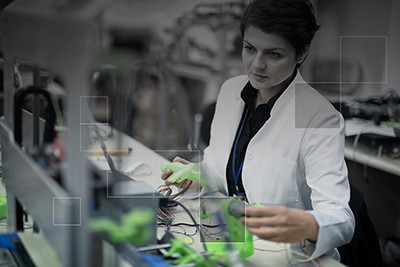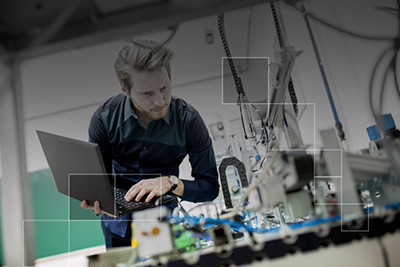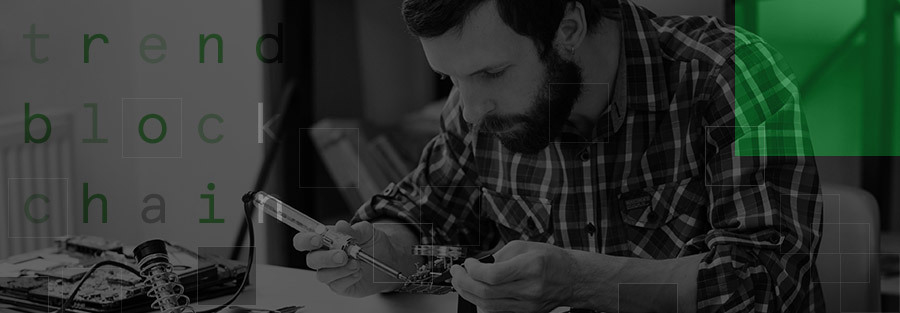Fabricating a Future for Distributed Manufacturing with Blockchain
Today, a single person can create products including clothing, electronics and furniture that, just five years ago, would have required a full-scale factory to manufacture. The accessibility of sophisticated digital fabrication tools and technology, like 3D printing and CNC milling, are generating huge opportunities for entrepreneurs – aka makers – and small businesses. These tools enable today’s innovators to not only design and digitally produce increasingly complex and customized goods for both consumer and industrial applications, but to do so for substantially less than it might cost a traditional high-volume manufacturer.

As a student and designer, I was intrigued by both the potential implications of this dramatic transformation and how emerging technologies might alter how we design, produce and sell objects in the future. I chose to investigate this evolving approach to distributed manufacturing for my master’s thesis at Parsons School of Design.
I quickly discovered that while the technology to enable this transformation was readily available, further progress and widespread adoption was being hindered by the lack of a viable system to coordinate new types of trusted manufacturing relationships, particularly around issues of intellectual property, compensation and liability. Specific questions I sought to answer were: how does one license an idea that can be physically replicated thousands of times, from anywhere in the world, in any material, in any quantity and how might we track and manage copies of original design blueprints, ensuring that the designer was credited and paid for any copies made and potentially for derivative works, or remixes of the design sold later on?
A Protocol for Trust
My research into these concerns lead me to the blockchain – a technology that is rapidly gaining popularity in industries such as banking, manufacturing and supply chain. Using this alternative to centralized computing, any digital asset from money to intellectual property can be stored, moved, and exchanged without any intermediaries.
As blockchain technology has advanced, the ability to run code allows users to perform more complex operations like smart contracts, which are computer programs that set the rules for transferring digital assets between people. A smart contract not only defines the rules and penalties around an agreement like a standard contract, it automatically enforces those obligations using code. Since smart contracts live on the blockchain, they, in effect, allow for a new way of arranging “trusted” transactions of any asset directly between two or more parties, authenticated by mass-collaboration and powered by collective self interest.
Unum
With this knowledge as a background, my partner Audrey Fox and I developed and prototyped Unum, a proof-of-concept blockchain d’app (distributed application) and online platform, to test how a blockchain-based model might work within peer-to-peer business relationships. Unum represents the first viable electronic infrastructure to coordinate trusted B2B relationships between geographically separate designers and manufacturers while also providing customers with complete transparency into the full lifecycle of their products, from raw materials, design and manufacturing to the moment it reaches the buyer.
“We imagine a future where the blockchain can support a more distributed manufacturing landscape, creating new business networks that allow for the on-demand production of a range of products at or near the customer’s location.”
Unum leverages the blockchain protocol to facilitate this trust by encoding each party’s terms and conditions into smart contracts that create and manage all transactions along a unique digital manufacturing thread for every physical product instance fabricated from a digital design blueprint. Since these transactions are tracked digitally, Unum allows designers and manufacturers to collaborate in a trusted fashion, automatically compensating the parties according to predefined rules for each product. This thread is immutably tied to the finished product using NFC-based seals, which are embedded and activated by manufacturers during production, allowing a customer to literally own a verified physical copy of a digital idea, forever.
The Future
We imagine a future where the blockchain can support a more distributed manufacturing landscape, creating new business networks that allow for the on-demand production of a range of products at or near the customer’s location. The blockchain protocol can be leveraged to build the foundation for this model in three important ways:

- Smart contracts securely and seamlessly coordinate the intellectual property and compensation inherent in designer-manufacturer relationships, allowing new and traditional players to collaborate peer-to-peer to produce and sell products.
- The blockchain opens a middle-ground for coordinating intellectual property and licensing in a future where more individuals will be able to produce and sell their own products, and IP protection becomes even more critical.
- Global ideas can be fabricated on demand, around customers, creating new value networks for local and regional economies that source labor and materials. This also has huge environmental benefits since supply chains can also potentially become more distributed and localized, removing the need to ship parts and finished products around the world.
Just as the Internet revolutionized how we create, share and sell digital content, these emerging technologies will increasingly come together to transform how we imagine, design and build physical objects. And just as many of the startups of yesterday have transformed into trend-driving innovators today, entrepreneurs, makers, and manufacturers of all kinds have a unique opportunity to get in on the ground floor and shape how this system evolves and what it will ultimately become. The future is here, now let’s distribute it.
Related Resources:
- Hackster.io Project: Blockchain Signaling System
- Article: Blockchain: A House Divided
- HBR Whiteboard Session: How Does Blockchain Work?
